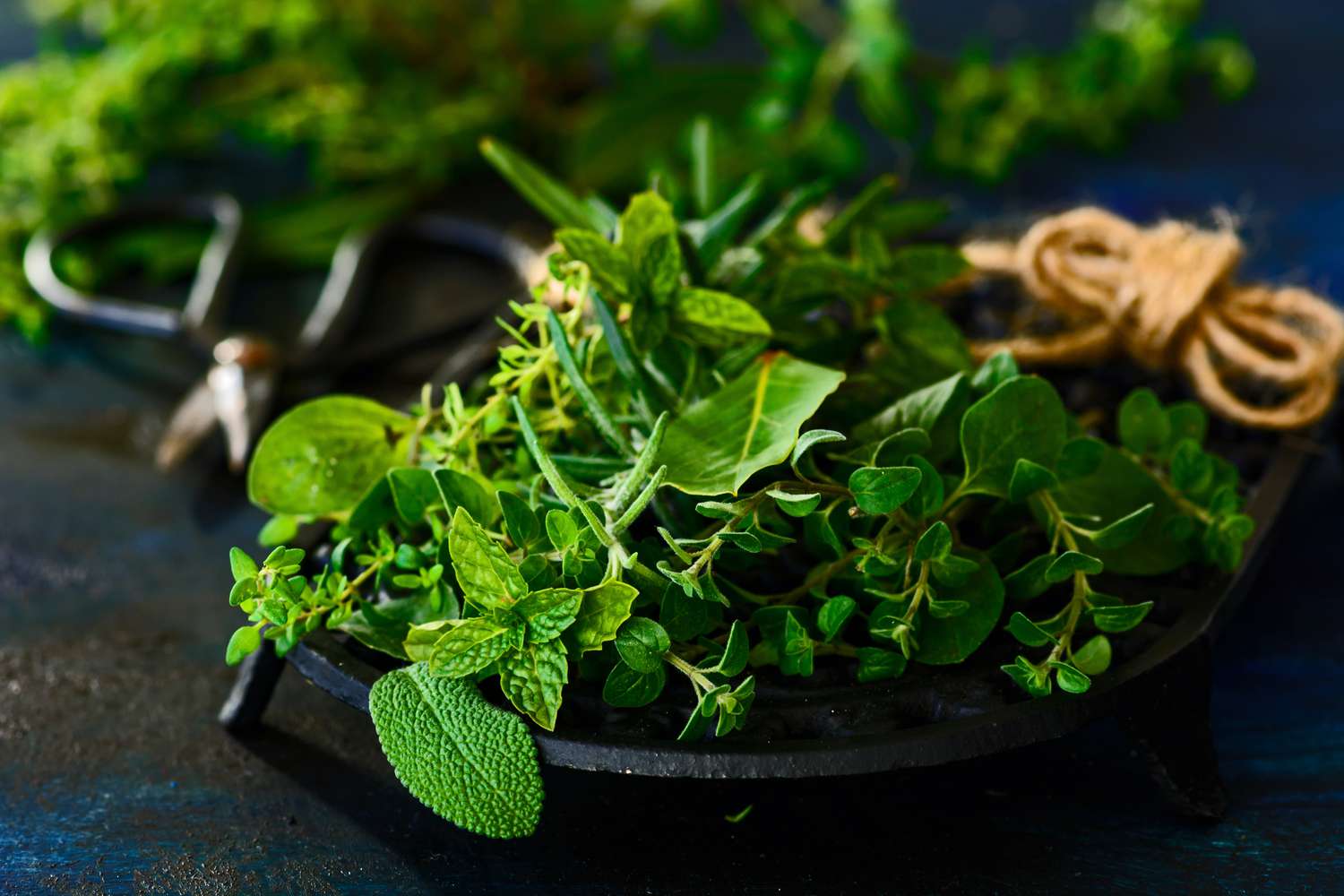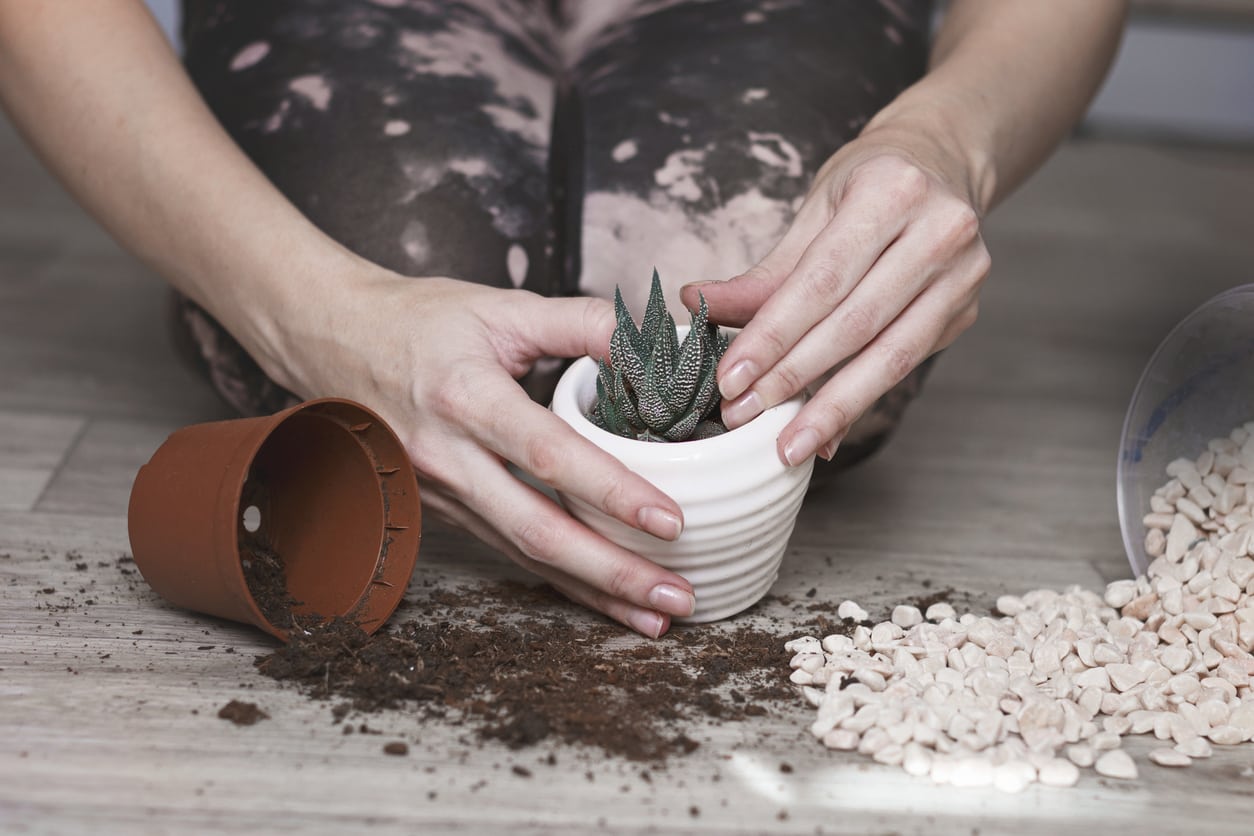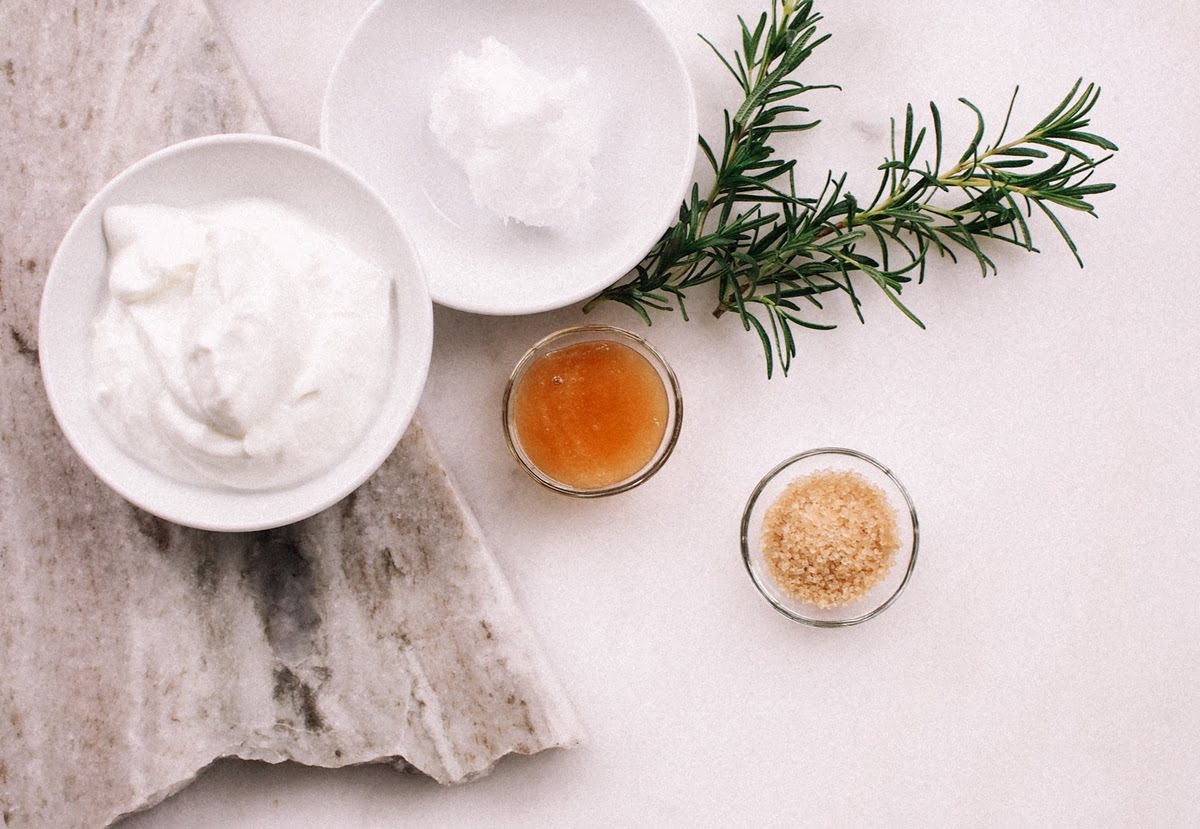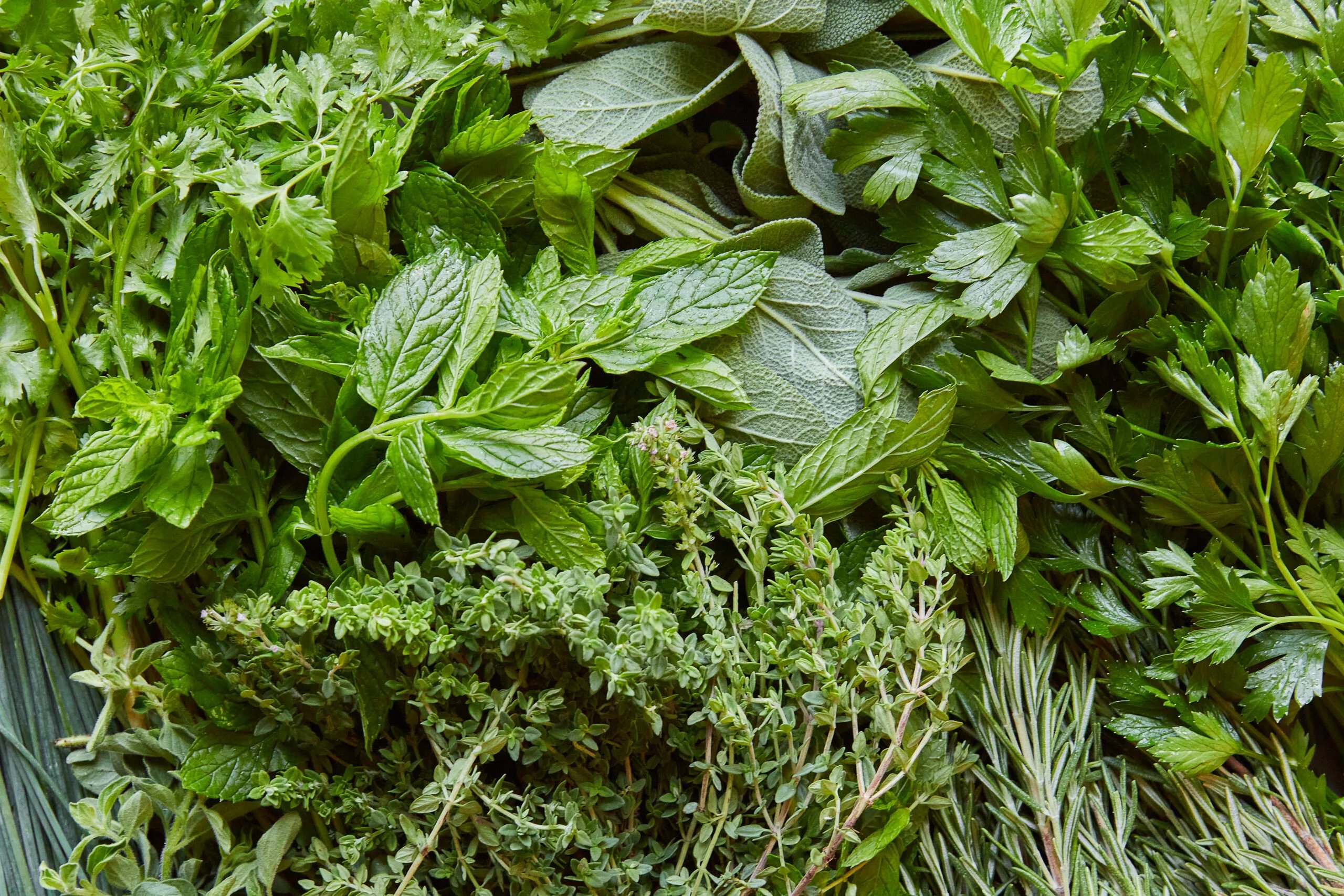Home>Gardening News and Trends>Gardening Trends>What Is Mixed Herbs


Gardening Trends
What Is Mixed Herbs
Modified: January 22, 2024
Discover the latest gardening trends and learn all about mixed herbs, their uses, and how to grow them in your own garden.
(Many of the links in this article redirect to a specific reviewed product. Your purchase of these products through affiliate links helps to generate commission for Chicagolandgardening.com, at no extra cost. Learn more)
Table of Contents
Introduction
Gardening is a timeless and rewarding hobby that allows individuals to nurture plants and create beautiful outdoor spaces. Whether you have a sprawling garden or a small balcony, gardening offers a chance to connect with nature and cultivate your own green oasis. As the world becomes more focused on sustainable living and self-sufficiency, gardening has seen a surge in popularity, with people of all ages and backgrounds embracing the joys of growing their own food and beautifying their surroundings.
One of the keys to successful gardening is staying up-to-date with the latest trends and techniques. By understanding the ever-evolving landscape of gardening, you can make informed decisions about what to plant, how to care for your plants, and the best practices to achieve aesthetic and productive gardens. In this article, we will dive deep into gardening trends to discover what’s new and exciting in the world of horticulture.
From organic gardening methods to sustainable practices, there’s a wealth of information to explore. We will explore the importance of native plants and how they contribute to the ecosystem, as well as key design concepts like vertical gardening and container gardening. Furthermore, we will delve into innovative technologies and gadgets that are revolutionizing the way we garden.
Whether you’re a seasoned gardener looking to expand your knowledge or a beginner eager to embrace the wonders of cultivating your own slice of paradise, this article will equip you with the insights and inspiration you need to take your gardening game to the next level. So, grab your favorite gardening tools and let’s dive into the exciting world of gardening trends!
Definition of Mixed Herbs
Mixed herbs are a versatile blend of dried herbs that are commonly used in cooking to add depth, flavor, and aroma to various dishes. It is a carefully curated combination of different herbs, each contributing its unique characteristics to create a harmonious flavor profile.
The specific herbs used in a mix may vary depending on the region and personal preferences, but common ingredients include basil, oregano, thyme, rosemary, parsley, and sage. The proportions of each herb in the blend may also vary, with some mixes leaning towards a particular herb for a more pronounced flavor.
What sets mixed herbs apart from individual herbs is the way they work together to create a well-rounded flavor. Each herb in the blend offers its own distinct taste and aroma, and when combined, they create a symphony of flavors that enhance the overall taste of the dish. Mixed herbs are commonly used in Italian, Mediterranean, and French cuisines, but they can be incorporated into a wide variety of dishes, including soups, stews, sauces, marinades, and roasted vegetables.
The convenience of mixed herbs lies in their ready-to-use nature. While using fresh herbs is highly desirable, they may not always be readily available. Dried mixed herbs offer a convenient alternative and have a longer shelf life, allowing you to have a flavor-packed addition to your dishes at any time.
It’s important to note that mixed herbs are not a one-size-fits-all solution. Different brands and blends may have slight variations in flavor and intensity. Therefore, it’s worth experimenting with different brands or even creating your own mix to find the combination that best complements your culinary creations.
Common Types of Mixed Herbs
There are several popular types of mixed herbs that bring a burst of flavor to dishes. Here are some of the common blends you are likely to come across:
- Italian Seasoning: This blend typically includes a combination of dried basil, oregano, thyme, and rosemary. It is commonly used in Italian cuisine, particularly in pasta sauces, marinades, and dressings.
- Herbes de Provence: Originating from the Provence region in France, this blend typically consists of dried rosemary, thyme, oregano, marjoram, and sometimes lavender. It adds a fragrant and aromatic element to dishes and pairs well with roasted meats, vegetables, and stews.
- Fine Herbs: This blend is a delicate combination of herbs such as chives, parsley, tarragon, and chervil. Fine herbs are often used to enhance the flavor of light dishes like eggs, salads, and seafood.
- Poultry Seasoning: As the name suggests, this blend is specifically designed for seasoning poultry dishes. It typically includes a combination of herbs like sage, thyme, marjoram, and sometimes rosemary. Poultry seasoning can also be used to add a touch of flavor to stuffing and vegetable dishes.
- Mexican Seasoning: This blend often incorporates dried herbs such as oregano, cumin, chili powder, garlic powder, and paprika. It is commonly used in Mexican and Tex-Mex dishes, including tacos, fajitas, and enchiladas.
These are just a few examples of the many mixed herb blends available. Each blend has its own distinct flavor profile, allowing you to experiment and find the combination that best suits your taste preferences and the specific cuisine you are preparing.
Culinary Uses of Mixed Herbs
Mixed herbs are a versatile seasoning that can elevate the flavors of various dishes. Their unique blend of herbs adds depth, complexity, and aroma to a wide range of culinary creations. Let’s explore the diverse culinary uses of mixed herbs:
- Soups and Stews: Adding a teaspoon or two of mixed herbs to soups and stews enhances the overall flavor profile. Whether it’s a hearty vegetable soup or a savory beef stew, mixed herbs can bring a comforting and aromatic element to the dish.
- Sauces and Gravies: Incorporating mixed herbs into sauces and gravies can take them from ordinary to extraordinary. Whether it’s a classic marinara sauce, a creamy mushroom sauce, or a flavorful pan gravy, the addition of mixed herbs adds complexity and depth of flavor.
- Roasted Vegetables: Tossing mixed herbs with olive oil and coating your favorite vegetables before roasting will infuse them with a savory and aromatic punch. From roasted potatoes to root vegetables and even grilled eggplant, mixed herbs can elevate the taste of roasted vegetables.
- Marinades and Rubs: Mixed herbs can be used to create flavorful marinades for meats, poultry, and even tofu. The blend of herbs adds dimension to the marinade, resulting in a deliciously seasoned dish. Likewise, mixed herb rubs can be applied to meats before grilling or roasting to impart a tantalizing flavor.
- Pasta and Pizza: Whether you are making a classic spaghetti Bolognese or a homemade pizza, mixed herbs are a staple seasoning. They bring a taste of Italy to your dishes, adding an herbaceous and aromatic element that pairs perfectly with tomato-based sauces and cheese.
These are just a few examples of how mixed herbs can be utilized in the culinary world. Their versatility allows them to be incorporated into a wide range of dishes, from appetizers and main courses to side dishes and snacks.
When using mixed herbs, it’s important to remember that a little goes a long way. Start with a small amount and gradually adjust to your taste preferences. It’s also worth experimenting with different blends of mixed herbs to discover new and exciting flavor profiles that will enhance your culinary creations.
Health Benefits of Mixed Herbs
Aside from their role in enhancing the flavors of various dishes, mixed herbs also offer a range of health benefits. Many of these herbs are packed with essential vitamins, minerals, and antioxidants that contribute to overall well-being. Let’s explore some of the health benefits associated with mixed herbs:
- Rich in Antioxidants: Mixed herbs, such as rosemary, thyme, and basil, are known for their high antioxidant content. Antioxidants help protect the body against oxidative stress and reduce the risk of chronic diseases, including heart disease and certain types of cancer.
- Anti-inflammatory Properties: Some herbs found in mixed herb blends, like oregano and sage, possess anti-inflammatory properties. This can help reduce inflammation in the body, which is linked to various health conditions, including arthritis and inflammatory bowel disease.
- Support Digestive Health: Many herbs in mixed herb blends, such as parsley and dill, have been traditionally used to aid digestion. They can help relieve bloating, improve digestion, and soothe gastrointestinal discomfort.
- Boost Immune System: Several herbs in mixed herb blends, like thyme and garlic, have immune-boosting properties. They contain compounds that help enhance the body’s immune response and protect against infections.
- Contain Essential Nutrients: Mixed herbs are a rich source of essential vitamins and minerals. For example, parsley is packed with vitamin C and vitamin K, while basil provides a good dose of vitamin A and manganese.
It’s important to note that while mixed herbs can provide health benefits, they are typically used in small quantities in culinary applications. Therefore, the concentration of nutrients in a single serving of a dish may be limited. However, incorporating mixed herbs into your cooking can still contribute to a well-rounded and nutrient-rich diet.
It’s worth mentioning that as with any dietary changes or potential health benefits, it’s always best to consult with a healthcare professional or registered dietitian to determine what is suitable for your specific health needs and conditions.
How to Use Mixed Herbs in Cooking
Mixed herbs are a versatile seasoning that can elevate the flavors of a wide variety of dishes. Here are some tips on how to best utilize mixed herbs in your cooking:
- Seasoning: Sprinkle a teaspoon or two of mixed herbs onto your favorite roasted vegetables, grilled meats, or even scrambled eggs for added flavor.
- Sauces and Soups: Add a tablespoon of mixed herbs to your marinara sauce, soup, or stew during the cooking process to infuse them with a delicious aroma and savory taste.
- Marinades: Combine mixed herbs with olive oil, garlic, and lemon juice to create a flavorful marinade for meats, poultry, or tofu. Let the ingredients marinate for a few hours or overnight before cooking.
- Herb Butter: Mix softened butter with mixed herbs and a pinch of salt. Use this herb-infused butter to elevate the flavors of grilled or roasted meats, spread it on warm bread, or melt it over steamed vegetables.
- Breadcrumb Coating: Combine mixed herbs with breadcrumbs to create a flavorful coating for chicken cutlets, fish fillets, or vegetable fritters.
- Topping: Sprinkle a pinch of mixed herbs on top of homemade pizzas, quiches, or savory tarts for an added burst of flavor.
- Infused Oils and Vinegars: Create your own herb-infused oils and vinegars by adding mixed herbs to a bottle of olive oil or vinegar. Let it infuse for a week or two before using it to dress salads or flavor dishes.
- Herb Rubs: Combine mixed herbs with spices, salt, and pepper to create a flavorful rub for meats before grilling or roasting. Pat the rub onto the meat and let it sit for a while to allow the flavors to penetrate.
Experiment with different applications of mixed herbs to discover your favorite combinations and dishes. Remember to taste as you go and adjust the amount of mixed herbs according to your personal preferences.
Additionally, keep in mind that the intensity and flavor of mixed herbs may vary depending on the blend and brand you use. It’s a good idea to taste and adjust the seasoning at the end of the cooking process to ensure the desired flavor balance.
Tips for Storing Mixed Herbs
Proper storage of mixed herbs is essential to preserve their flavor and maximize their shelf life. Here are some helpful tips for storing your mixed herbs:
- Keep in a Cool, Dark Place: To maintain the quality of your mixed herbs, store them in a cool, dry place away from direct sunlight. Sunlight and heat can cause the herbs to lose their flavor and potency.
- Use Airtight Containers: Transfer your mixed herbs to airtight containers or jars with tight-fitting lids. This will protect them from air, moisture, and light, which can degrade their quality.
- Avoid Exposure to Humidity: Moisture can cause herbs to clump together and lose their flavor. Be sure to keep your mixed herbs away from humid areas of the kitchen, such as near the sink or stove.
- Date and Label: It’s a good practice to label your mixed herb containers with the date of purchase or the date of preparation. This will help you keep track of their freshness and ensure that you use them within a reasonable time.
- Buy in Small Quantities: If you don’t use mixed herbs frequently, consider purchasing them in small quantities to avoid having them sit unused for too long. Freshness is key to extracting the maximum flavor from your herbs.
- Freezing for Longer Storage: If you have a large quantity of fresh mixed herbs and want to extend their shelf life, consider freezing them. Chop the herbs and freeze them in ice cube trays with a little water or olive oil. Once frozen, transfer the herb cubes to a freezer bag or container. This method allows you to conveniently add herbs to your dishes without sacrificing their flavor.
- Check for Freshness: Over time, the flavor and potency of herbs diminish. To ensure you are using fresh herbs, check their color, aroma, and taste regularly. If the herbs have lost their vibrant color or their aroma is weak, it may be time to restock.
By following these storage tips, you can prolong the shelf life of your mixed herbs and maintain their quality, ensuring that you have flavorful herbs ready to enhance your culinary creations whenever needed.
Conclusion
Gardening trends continue to evolve, offering exciting opportunities for both seasoned gardeners and beginners alike. From exploring the latest technology and innovative techniques to embracing sustainable practices and cultivating native plants, there is a wealth of knowledge and inspiration to enhance our gardening experiences.
In this article, we have delved into the world of gardening trends, discovering the importance of staying informed and keeping up with the latest developments. We explored mixed herbs, a versatile blend of dried herbs that adds depth and flavor to various dishes. From Italian seasoning to herbes de Provence, there are numerous types of mixed herbs that cater to different culinary preferences.
Moreover, we discussed the culinary uses of mixed herbs, such as enhancing sauces, soups, and marinades, as well as using them in roasted vegetables, pizza, and pasta dishes. Additionally, we explored the health benefits of mixed herbs, highlighting their antioxidant properties, anti-inflammatory effects, and contribution to digestive health and immunity.
To make the most of mixed herbs, we provided practical tips on how to incorporate them into your cooking, including seasoning, marinating, creating herb butter, and making herb-infused oils and vinegars.
Finally, we emphasized the importance of storing mixed herbs properly to maintain their quality and freshness. By keeping them in cool, dark places in airtight containers and avoiding exposure to humidity, you can maximize their shelf life and enjoy their flavors for longer.
As you embrace the world of gardening and culinary exploration, remember to have fun and be creative. Adapt gardening trends to your specific needs and preferences, experiment with different mixed herb blends, and let your imagination run wild in the kitchen.
So, whether you have a small herb garden on your windowsill or a sprawling backyard oasis, dive into the world of gardening trends and the delights of mixed herbs. Discover new flavors, nourish your body, and create memorable culinary experiences that showcase the beauty and bounty of nature.









